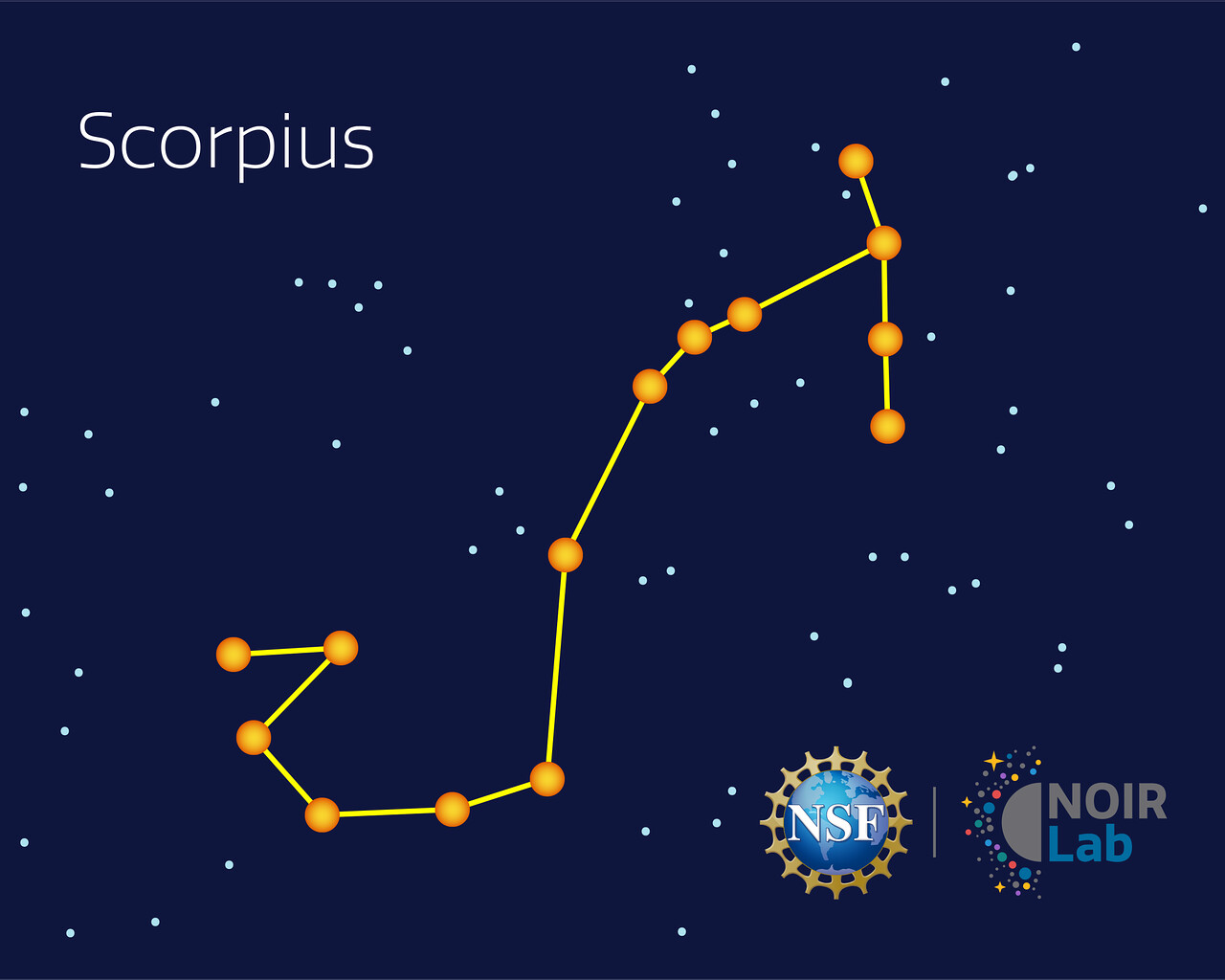Scorpius
Origin
The ancient Greek constellation of The Scorpion was imagined related to the death of the hunter Orion, but the Babylonian original showed a gigantic scorpion as a gate-keeper to the Netherworld. It marks the point when the Sun changed from the Northern to the Southern hemisphere (equinox) and was incorporated in the 4000 years old Epic of Gilgamesh
For the Aymara culture, this constellation represents three animals. The scorpion's tail is Amaru or the Serpent, superimposed on Choquechinchay or the Cougar, where Antares (the brightest star) represents for each animal one of its eyes. In the head of the scorpion we find Kuntur or the condor, which is represented with open wings. For the Aymaras these three animals have a deep symbolic, religious and cultural value.
The people of the Polynesian islands saw a great fishing hook in the sky. They named the constellation Manaiakalani, the name of the god Maui's magical fishhook. According to their legends, Maui used the great hook to pull the Hawaiian islands off the ocean floor. He also used it to snare the Sun, slowing it down to create longer days in the summer.
Bright Stars
Scorpius contains several bright stars. Some of the brightest stars in Scorpius include:
- Antares (Alpha Scorpii): Antares is the brightest star in Scorpius and is often referred to as the ‘heart of the scorpion’. It is a red supergiant star and one of the brightest stars in the entire sky, with a visual magnitude of 0.96, approximately 550 light-years distant from the Sun.
- Shaula (Lambda Scorpii): Shaula is the second-brightest star in Scorpius. It is a blue-white giant star and is part of the scorpion's stinger. Shaula is actually a triple star system, composed of two B-type stars and a pre-main-sequence star.
- Acrab (Beta Scorpii): Acrab is part of the scorpion's claw. It is a blue-white star.
- Dschubba (Delta Scorpii): Dschubba is a multiple star system, consisting of at least three stars. The primary star in the system is a blue-white B-type giant, which is the most prominent and visually dominant component. The other two stars in the system are a close binary pair.


 Photo of the constellation Scorpius produced by NOIRLab in collaboration with Eckhard Slawik, a German astrophotographer.
The annotations are from a standardized set of 88 western IAU constellations and stick figures from Sky & Telescope. Please find here a non-annotated version of the image.
Photo of the constellation Scorpius produced by NOIRLab in collaboration with Eckhard Slawik, a German astrophotographer.
The annotations are from a standardized set of 88 western IAU constellations and stick figures from Sky & Telescope. Please find here a non-annotated version of the image.
Credit: E. Slawik/NOIRLab/NSF/AURA/M. Zamani
Notable Objects
Scorpius is located close to the Milky Way so there are several interesting objects to observe.
Messier 4 is a globular cluster located close to Antares. They are both visible in the same binocular field (and even some wide-field telescopes). Messier 4 is about 6000 light-years away making it the closest globular cluster to Earth.
Messier 6 is an open cluster known as the Butterfly Cluster. Messier 6 has a magnitude of 4.2 and is just visible under very dark skies.
Messier 7 is another nice open cluster located just off the tail of Scorpius. Messier 7 is visible to the naked eye from dark locations and is known as the Ptolemy Cluster.
Messier 80 is a compact globular cluster of 7th magnitude. Although it is not visible to the naked eye, it is an easy catch in binoculars and pleasing through a moderate sized telescope.





















